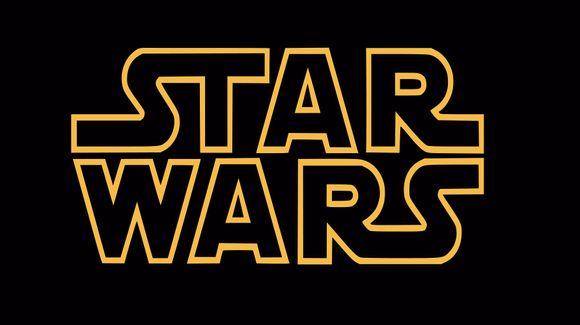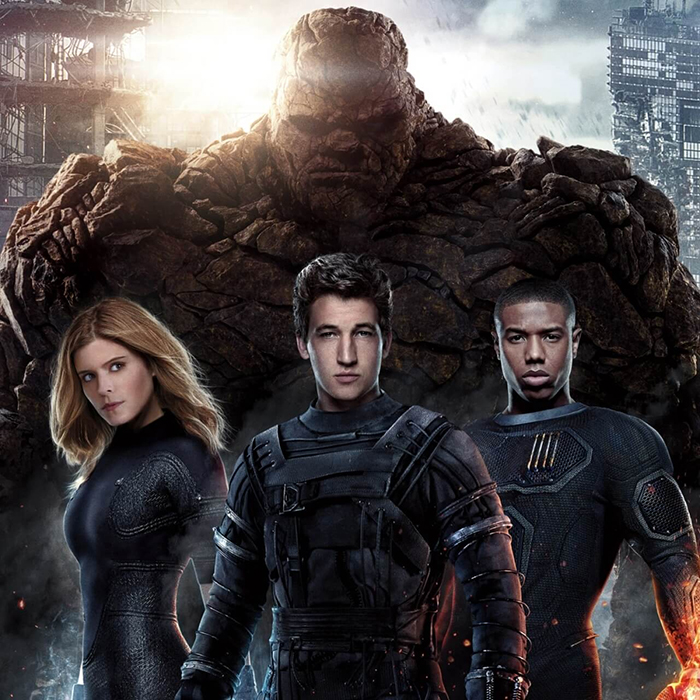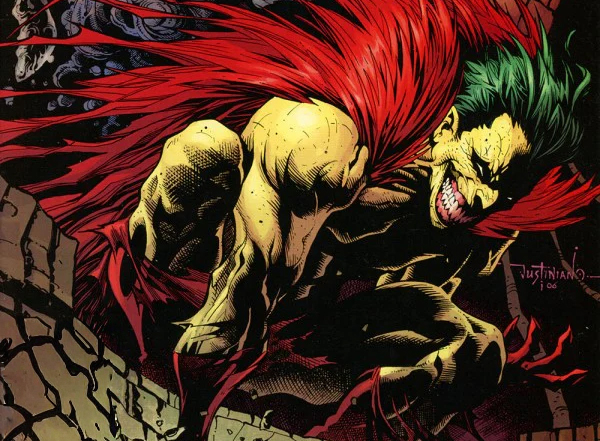|
10/31/14 @ 9:07 pm EST
In December Dynamite has a new Doc Savage Special coming out written by David Walker. Byron Brewer caught up with the writer to talk about the special and the Woman of Bronze. BYRON BREWER: Doc Savage is all over the place these days, David. Tell us a little about how this “special” came about.David Walker: When Dynamite first acquired the rights to Doc Savage, I asked them if they had any plans for Pat Savage. They told me that Pat was going play a significant role in Chris Roberson’s run, but they hoped to do more with her in the future. I asked that they keep me in mind. Clearly, they kept me in mind. BB: As I understand it, Pat Savage, Doc’s cousin, is the star here. How did Pat get the spotlight?David Walker: Pat got the spotlight because she deserves the spotlight. She was first introduced in 1934—that makes her older than Wonder Woman, Batgirl, Supergirl, or just about any other female hero. But with only a few exceptions, Pat has never had the spotlight. I’ve wanted to see a really fun solo adventure for Pat Savage since I was a kid. BB: Doc has been working in all time periods. Where are we in time with Pat?David Walker: This story is set in the 1930s. I wanted Pat to be fairly young, and still in a place where Doc doesn’t take her very seriously. Chris Roberson did a great job of making Pat a much more viable and active member of the team. He did what I would’ve done, had I been writing a Doc Savage story. But since this is a Pat story, I decided to set it at a time when her role wasn’t clearly defined. I also like the fact that during this time period, women were expected to be either the damsel in distress, the love interest, or the femme fatale, and Pat is none of these. BB: Tell us a little about your perceptions of Pat as a character. She has been around quite awhile.David Walker: I fell in love with Pat Savage when I was about 10-years-old, right when I started reading Doc Savage books. She seemed like the coolest character ever, and I actually started writing and drawing my own Pat Savage comic. Somewhere, I still have a picture I drew of her. When I got older, and reread some of those adventures, I realized that Pat was never fully utilized as well as she could’ve been. Those stories were written in the 1930s and 40s, and with only one or two exceptions, Pat never really got to prove herself. She would be present, but somewhat marginalized. She wasn’t the superhero I had remembered her being when I was a kid. I wanted the opportunity to have her become a bit more of a badass. BB: Will we see Doc and the boys in this special at all?David Walker: Doc makes a brief appearance, but I made a conscious decision not to have him be an active part of the action. A huge part of the story is Pat proving that she’s capable of doing anything Doc or the Fantastic Five can do, but there’s no way she could do that with them present. Instead, I introduced two sidekicks for Pat to have—and I think these two, who happen to be cousins as well, will say something special about Pat and the company she keeps. BB: Can you give us any inkling of the big bad here?David Walker: Like I said, this story takes place in the 1930s. The bad guys are Japanese spies, who have a small army of ninjas at their disposal. Seriously. Because of the era, I wrestled with having her go up against Nazis, and in an early draft of the story, the villains were very much sinister Nazis right out of “Raiders of the Lost Ark.” I wanted to try something different, and at that time in history, Japan had invaded China and Hong Kong, which gave me an excuse to bring in ninjas. BB: Why is artist Kewber Baal right for this book?David Walker: First of all, Kewber does great action sequences. There’s also a moody intensity to his non-action sequences. That combination plays well to the story, because it is a combination of action, as well as being a very emotional journey for Pat. It was really important for me that we have an artist that didn’t draw Pat like a sex object. She needs to be a badass. Everything I’ve seen of Kewber’s other work tells me he’s the right person for the job. BB: More and more these days, we are seeing strong females becoming leads in comics. Would you write a Pat Savage comic should the opportunity present itself?David Walker: Is that a trick question? Of course I would. I introduced two supporting characters, just in case Dynamite ever asked me to do another Pat Savage story. I’d like to give her a team of her own, which would be very different from Doc’s team. But also I’d like to give readers a positive female hero to inspire them. I think it is important for all readers to see strong representations of women. I also think the comic industry as a whole needs to recognize that there are a lot of girls and women who read comics, and then cater to that market, without pandering. Not every girl wants to be a princess or have a pet pony—some want to go on adventures, blow things up, and kick a bunch of butt.  11/29/25 @ 11:47 am EST
If you’re of a certain age, then you realize that Peter Hammond was not the first live-action Spider-Man to appear on television screens. That honor goes to Jim Hensen puppeteer Danny Seagren who was a regular on both Sesame Street and The Electric Company. Seagren was both a puppeteer and puppet maker and was the right hand of Ernie along with putting on the Big Bird suit on several occasions including an appearance on the Ed Sullivan Show. He was also the web slinger on the show that started the careers of Rita Moreno and Morgan Freeman as both shows fell under the Children’s Television Workshop. He went on to create puppets for other series like Curiosity Shop, Captain Kangaroo and Who’s Afraid of Opera. “Danny will be greatly missed by his family, friends and those throughout the community he loved living in,” his family said in his obituary. Seagren died on November 10th at the age of 81.  11/29/25 @ 11:31 am EST
Director Shawn Levy has officially hired renowned composer Thomas Newman to craft the score for his upcoming Star Wars: Starfighter film. The collaboration marks a significant moment for the celebrated sci-fi franchise, as Newman steps into a universe long defined by the iconic music of John Williams. His distinguished career includes memorable scores for films such as The Shawshank Redemption, Finding Nemo, and 1917, brings a fresh perspective to the Star Wars saga. Over the years, Newman has earned an impressive 15 Oscar nominations, a testament to his exceptional talent and enduring impact on the film industry. Levy, celebrated for his work on blockbusters like Free Guy and Deadpool and Wolverine, and the hit series Stranger Things, expressed enthusiasm for the partnership. He highlighted Newman's ability to blend sweeping orchestral moments with subtle, character-driven motifs—a style well-suited to the expansive and adventurous spirit of Star Wars. While plot details remain under wraps, Levy and Newman’s collaboration promises a thrilling and emotionally resonant cinematic experience.  11/16/25 @ 12:48 pm EST
While most of the focus over at Marvel Studios is currently on the pair of upcoming Avengers films, Ryan Coogler is ready to return to Wakanda for a third Black Panther film. We’d heard of the possibility of the film originally from Denzel Washington who, while speaking of his potential retirement, mentioned the film as one of his future projects and then when Nate Moore left Marvel last year, he said he would be back producing the third Black Panther film. Now, Coogler himself said while on stage talking about his film Sinners, that Black Panther 3 would be his next movie. The series kicked off with Chadwick Boseman as T’Challa, king of the African Nation of Wakanda and while he reprised the role in Avengers: Infinity War and Endgame, he sadly passed away shortly after. The sequel dealt with the characters death and passed the mantle on to his sister Shuri played by Letitia Wright who is expected to reprise the role in the upcoming Avenger films, but with talks of a potential soft reboot of the MCU, it’s unclear who will be wearing the mask for the third film.  11/16/25 @ 12:31 pm EST
The most recent news on the DCU has to do with Jimmy Olsen. Variety is reporting that Skyler Gisondo will reprise his role from Superman in a true-crime docuseries style show that focuses on villains in the universe starting with the Flash rogue, Gorilla Grodd. Tony Yacenda and Dan Perrault are set to write and showrun with James Gunn and Peter Safran joining them as executive producers. The show is planned for HBO Max and will be a mockumentary style similar to Yacenda and Perrault’s previous series like American Vandal and Players. In the original report, Variety claimed the series would be called DC Crime, something Gunn took to social media to debunk, saying there had never been any project in production called DC Crime, he then added that his saying that doesn’t mean that the rest of the report is false. This sounds like a pretty good confirmation to me.  11/15/25 @ 12:49 pm EST
A new Star Trek film is in the works and Paramount is tapping the team of Jonathan Goldstein and John Frances Daley to write, produce and direct. This news comes shortly after David Ellison, founder of Skydance who recently purchased the studio, told investors that the next Star Trek film would not be a sequel to the Chris Pine/ Zachary Quinto lead series of films. While this hasn’t been 100% confirmed, word is that the new film will be focused on new characters and not directly tied to any previous film or television series. Goldstein and Daley have a good track record when it comes to revitalizing franchises having written Spider-Man: Homecoming for Marvel Studios and wrote and directed Dungeons & Dragons: Honor Among Thieves which was very well received by fans and critics.  11/15/25 @ 12:32 pm EST
With The Fantastic Four: First Steps having moved to Disney+, the Pedro Pascal and Vanessa Kirby lead team is now first in fans minds. But one person still thinks about the First Family of Marvel presented a decade ago and what went wrong. Miles Teller, who played Reed Richards in Josh Trank’s 2015 version of the property, still thinks about the project and how he believes the problems all came down to one person. Teller was on Sirius XM’s Radio Andy show said, “You saw the movie, right? Your eyes were working during that time? I think it’s unfortunate because so many people worked so hard on that movie. And, honestly, maybe there was one really important person who kind of f***ed it all up.” While Teller didn’t say who that was, he was referring to the person who made the final cut on the film, which was not director Trank. Teller said that he wanted a superhero film on his resume to help show him as a serious leading man, but after seeing the final cut recalled, “I remember talking to one of the studio heads, and I was like, ‘I think we’re in trouble.'” The 2015 version made $167 million worldwide compared to this year’s version which made $521 million. He stopped short of calling for a director’s cut of the film.  11/09/25 @ 2:03 pm EST
The Creeper is a unique character from DC Comics, first introduced in "Showcase #73" in 1968. Created by Steve Ditko, The Creeper’s real name is Jack Ryder, a former television talk show host and investigative journalist in Gotham City. After being attacked during an undercover operation at a costume party, Ryder is injected with a serum by Dr. Yatz and gains superhuman abilities, including enhanced strength, agility, rapid healing, and a pain tolerance bordering on the supernatural. The serum, combined with a bizarre costume, transforms him into The Creeper, a vigilante known for his wild laughter, erratic behavior, and flamboyant appearance—a shock of green hair, yellow skin, and a red mane-like cape. The Creeper remains largely untouched by mainstream media, providing an opportunity to introduce audiences to a fresh face and break away from more established archetypes. His blend of horror, humor, and psychological complexity could create a film that stands out from traditional superhero fare. The Creeper’s unsettling persona and visual style lend themselves well to a film that could blend genres—horror, black comedy, and superhero action. His maniacal laugh and unpredictable methods could inject dark humor and psychological thrills, appealing to fans of films like "Joker" and "Deadpool" while carving out a distinctive identity in the DCU. Jack Ryder’s journey from cynical journalist to bizarre vigilante offers rich storytelling potential. Exploring themes of identity, sanity, and the nature of heroism, a Creeper film could delve into Ryder’s internal struggles and the impact of his dual life, making for a character-driven narrative that resonates with audiences seeking depth and complexity. And with being set in Gotham City, The Creeper’s adventures naturally intersect with the city’s gritty underworld, providing opportunities for noir-style detective storytelling. His background in journalism and investigation can be leveraged to create suspenseful plots involving corruption, criminal conspiracies, and moral ambiguity—making him an ideal protagonist for a film that explores the darker aspects of the DC Universe. The Creeper stands as one of DC Comics’ most unconventional and intriguing characters. His untapped potential, distinctive personality, and ability to straddle multiple genres make him a perfect candidate to lead a film in the new DCU.  ... 11/09/25 @ 1:37 pm EST
Predator: Badlands is doing very well, thanks for asking. The latest film in the long-running franchise set a few high franchise marks including domestic opening with $40M, best worldwide opening with $80M and best Cinemascore with an A-. The film also sits a the top of this week’s box office beating out the 2nd place film, Regretting You, by $32.9M… though that film is in its 3rd week. Other new films opening this week, Sarah’s Oil and Nuremberg, opened in 4th and 5th with just over $4M each. Badlands is the third Predator project for director Dan Trachtenberg, the first Prey showed how he could handle the franchise but then he wanted to follow it up with an animated film, Killer of Killers and then for the first time Badlands make the Predator the protagonist. 
11/08/25 @ 4:21 pm EST
Recent reports about problems on the set of Stranger Things may not have been what they seemed. There were stories being published that Millie Bobby Brown had filed a report against co-star David Habour, accusing the older actor of bullying. But the validity of those reports are now in question as both Brown and Harbour joined their Stranger Things cast members at the red=carpet premiere of the show’s fifth and final season. Brown and Harbour were seen joking together and even hugging. Brown has also spoke of Habour to Extra, saying: “It’s been amazing. We’re so lucky to have each other. The show means so much to the both of us, and to everyone here. This has been the last 10 years of our lives.” Brown stars as the psych-powered Eleven and Harbour plays Sherriff Jim Hopper who ends up adopting her. The fifth and final season will release on Netflix in three sets with Volume 1 on November 26 (four episodes), Volume 2 on Christmas (three episodes), and The Finale on New Year’s Eve.  11/01/25 @ 2:53 pm EST
There is a major movie franchise out there that is not going by its original name and it’s thanks to the star. When screenwriter Derek Kolstad finished what would become is most popular film, he was inspired by revenge-thrillers with one-word titles like Payback and Shooter. He dubbed his film, Scorn. The problem came when the star of the film went out and talked about it, he always referred to it by the lead character’s name rather than the title. After a while, the studio realized that their star, Keanu Reeves, had done millions of dollars worth of brand recognition for the name John Wick… they decided to go with it and renamed the film. Why Reeves did this is unknown, but Kolstad has since admitted that John Wick is a better franchise name, saying, “I can’t imagine it being Scorn now.” Was this an intentional thing on Reeves’ part or just a happy coincidence? We may never know.  |
